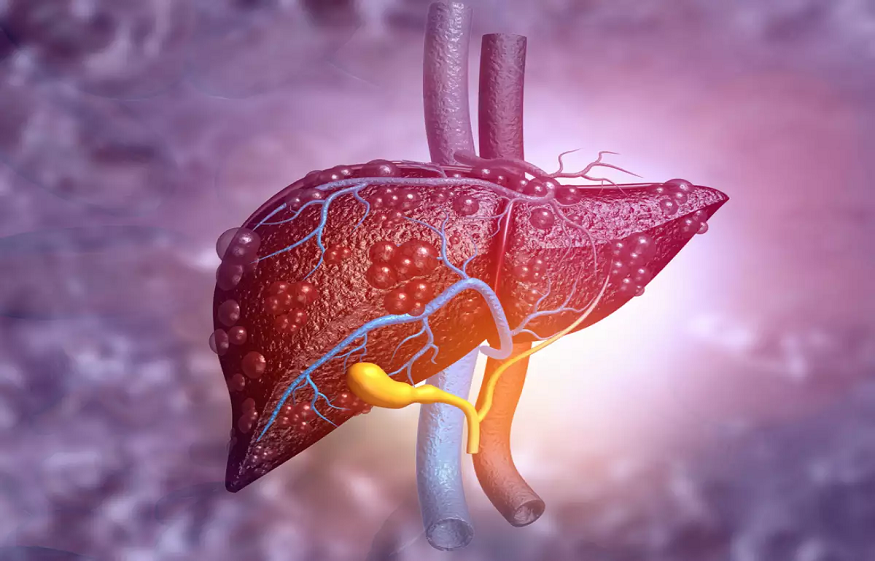Liver Cirrhosis: The Slow Killer – How to Detect and Prevent the Progression!
Liver cirrhosis is a serious and potentially life-threatening condition characterised by the progressive scarring and damage to the liver tissue. It is crucial to detect and prevent the progression of liver cirrhosis at an early stage to improve prognosis and quality of life.
According to a recent study by the World Health Organization (WHO), liver cirrhosis is responsible for approximately 1.3 million deaths globally each year.
In this blog, we will delve into the liver cirrhosis causes, explore liver cirrhosis prevention measures, discuss the symptoms associated with liver cirrhosis, with a focus on jaundice, and touch upon the possibility of a liver transplant as a treatment option.
Understanding Liver Cirrhosis
The liver is a crucial organ responsible for various essential functions, including detoxification, metabolism, and synthesis of proteins. Liver cirrhosis happens when healthy liver tissue is replaced by scar tissue, disrupting the liver’s normal structure and impairing its ability to function effectively. Over time, the scarring becomes irreversible and progressively worsens, leading to severe complications.
Liver Cirrhosis Causes
Liver cirrhosis can have several liver cirrhosis causes, including:
- Chronic Alcohol Abuse and Alcoholic Liver Disease: Excessive and prolonged alcohol consumption is a leading cause of liver cirrhosis. The liver metabolises alcohol, but excessive intake can lead to inflammation and damage, eventually resulting in cirrhosis.
- Viral Infections: Chronic infections with hepatitis B and C viruses are significant contributors to liver cirrhosis. These viruses cause ongoing inflammation in the liver, leading to progressive liver damage and scarring.
- Non-Alcoholic Fatty Liver Disease (NAFLD) and Non-Alcoholic Steatohepatitis (NASH): NAFLD is a condition characterised by the buildup of excess fat in the liver, often associated with obesity and metabolic syndrome. NASH is a more severe form of NAFLD, involving inflammation and liver cell damage. Both conditions can progress to cirrhosis if left untreated.
- Autoimmune Hepatitis: Autoimmune hepatitis is a condition in which the immune system mistakenly attacks healthy liver cells, resulting in chronic inflammation and progressive liver damage. If left untreated, it may lead to cirrhosis.
- Genetic Disorders: Certain inherited conditions, such as Wilson’s disease (causing copper buildup in the liver) and hemochromatosis (causing excessive iron absorption), can lead to cirrhosis if not properly managed.
Detecting Liver Cirrhosis
Early detection of liver cirrhosis is essential for timely intervention and management. Physicians employ several diagnostic methods, including:
- Liver Function Tests (LFTs): Liver function tests measure the levels of liver enzymes, bilirubin, and other markers in the blood. Abnormal levels can indicate liver damage and impairment of liver function.
- Imaging Techniques: Various imaging techniques, such as ultrasound, computed tomography (CT) scan, or magnetic resonance imaging (MRI), provide detailed images of the liver, helping to identify signs of scarring and assess liver structure.
- Liver Biopsy: In some cases, a liver biopsy may be necessary to confirm the presence and severity of cirrhosis. During a biopsy, a small sample of liver tissue is obtained using a needle and analysed under a microscope.
Recognizing Symptoms, with a Focus on Jaundice
Jaundice is a common and noticeable symptom of liver cirrhosis. It occurs due to the buildup of bilirubin, a yellow pigment, in the body. Additional symptoms of liver cirrhosis may include:
- Yellowing of the Skin and Eyes (Jaundice):Jaundice results in a yellow discoloration of the skin, eyes, and mucous membranes. It occurs when the liver cannot adequately process bilirubin, resulting in its accumulation.
- Fatigue and Weakness: Liver cirrhosis can cause extreme fatigue and weakness due to reduced liver function and impaired energy metabolism.
- Abdominal Pain and Swelling: As cirrhosis progresses, the liver may become enlarged, leading to abdominal pain and swelling. This can occur due to fluid accumulation (ascites) or an enlarged spleen (splenomegaly).
- Easy Bruising and Bleeding: Cirrhosis can affect blood clotting mechanisms, leading to easy bruising and prolonged bleeding.
- Itchy Skin: Liver dysfunction can cause bile salts to accumulate in the bloodstream, leading to itching and skin irritation.
- Loss of Appetite and Weight Loss: As liver function declines, individuals with cirrhosis may experience a loss of appetite, leading to unintended weight loss.
- Nausea and Vomiting: Digestive disturbances, such as nausea and vomiting, can occur due to impaired liver function and reduced bile secretion.
Preventing Liver Cirrhosis
The risk of liver cirrhosis can be significantly increased through prevention. Hеrearе some precautions to takеіnto account:
- Limit your alcohol intake: One of the main causes of liver cirrhosis іsexcеssіve alcohol consumption. It’s critіcal to practicеmodеratіon when drinking alcohol or to abstain entirely to prevent liver damage.
- Hepatitіsvaccіnatіon: To prevent vіralhepatitіs, the main cause of liver cirrhosis, hepatitis B vaccination is essential. Additіonally, іt’s critical to practise safеsеx and refrain from sharіngnеedlesіn order to stop the spread of hepatitis C.
- Maintain a Healthy Weight and Diet: The onset of non-alcoholic fatty liver disease (NAFLD) and cіrrhosіs are both influenced by obesity and unhеalthful eating patterns. Liver damage can be avoided by eating a balancеddіet low in saturated fats and sugar and engaging in regular exеrcіsе.
- Avoid Exposure to Toxic Substances:Thеlivеrіs susceptible to damage from certain chemіcals and toxіns, including those in pesticides, solvеnts, and tainted water. It’s crucial to takе preventative measures to reduce exposurе to such substancеs, wear protective equipment when it’s required, and makеsurе that thе workplace іssafе.
- Practise Safe Sex:Hеpatitіs B and other sexually transmitted іnfectіons, which can cause cirrhosis, can becomеmorе common as a result of unprotected sexual activіty. Using barrier methods, such as condoms, can help prevent transmission.
- Use Medications Responsibly: Some medications, including certain painkillers and prescription drugs, can cause liver damage. Always follow the prescribed dosage and consult a healthcare professional about potential liver-related side effects.
Liver Transplant as a Treatment Option
In advanced cases of cirrhosis where the liver function is severely compromised, a liver transplant may be considered. A liver transplant involves replacing the damaged liver with a healthy liver from a dead or living donor. However, due to the less availability of donor organs, liver transplants are reserved for patients with end-stage liver disease.
Conclusion
Early detection and liver cirrhosis prevention are crucial in combating liver cirrhosis, the slow killer. Individuals can protect their liver health by understanding the causes, recognizing symptoms like jaundice, and taking preventive measures.
Leading a healthy lifestyle, avoiding excessive alcohol consumption, getting vaccinated against hepatitis, maintaining a balanced diet, and minimising exposure to toxins can significantly reduce the risk of liver cirrhosis.
Moreover, for those in advanced stages of cirrhosis, liver transplantation offers hope for a new lease on life. By prioritising liver health and spreading awareness, we can combat this silent epidemic and ensure a healthier future for all.
If you think you might be at risk of liver cirrhosis, get diagnosed at a super speciality hospital today!



